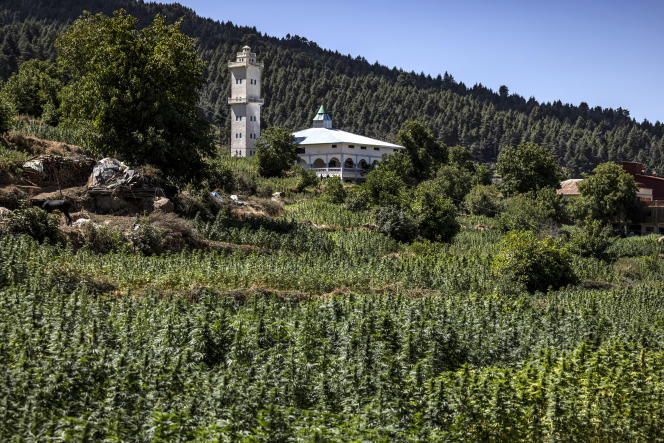Grandstand. Between regional and global pressures to reduce its illegal cannabis production, and the opportunity to turn part of it into a legal medical industry following the removal of cannabis from the list of substances without therapeutic value in the single convention on narcotic drugs in December 2020, Morocco chose to respond by adopting its law on the legal uses of cannabis in July 2021.
Aiming at the development of a new industrial sector but carried by the Ministry of the Interior (and not those of industry, health or agriculture), the law embodies the crest path taken by the Moroccan authorities: on the one hand to maintain police control over the commercial chain, from the cultivation of the plant to the delivery of finished products, and on the other to hope to convince public opinion by developing an export sector with high added value, allowing solid economic opportunities for traditional farmers in the Rif mountains, the world’s largest illegal production area.
This cautious approach is certainly in line with international law, which classifies cannabis as a substance as addictive as heroin or cocaine, and imposes strict control of its legal uses. It also serves as a balance point between conservatives and liberals in the country by legalizing some uses while keeping them under police supervision, this reform having been advocated and supported by two progressive bodies, the Special Commission on the Development Model (CSMD) and the Economic, Social and Environmental Council, while the Islamist Justice and Development party, that of the head of government at the time of the adoption of the law, voted against in Parliament.
Blockbuster products
However, the complex convolutions of the adoption of the law, coupled with the dissemination of a public discourse projecting future domination of the global market as an argument to attract national and international investors, show the limits of the exercise.
First, the manipulation of the substance imposes administrative and logistical controls as strict as those required for morphine or other opiates, thus systematically reducing the economic channels and the markets promised to farmers who today easily sell their illegal crops. .
Then, the lucrative market for legal cannabis is that of recreational and non-medical uses, as suggested by the American market, the most mature in the world, whose sales projection in 2028 concerns 75% recreational, evaluating it at 43 billion dollars, against 14 billion for medical.
The assessment that the competitive advantages (lower cost, proximity to European markets or agricultural know-how) would allow an explosion in demand for Moroccan medical cannabis and non-psychoactive cannabidiols (CBD) is also illusory. Because competitive advantages are reduced if innovation is limited. And it is this innovation that an approach as restrictive as that of Morocco and many other countries, traditionally producers or transit and accused of irrigating rich Western consumer markets, suffocates.
Excessive vertical restraints, through strict prescription and planning from the choice of seeds to the finished products, leave no room for the arrival of products ” blockbusters “, which allow the commercial successes and the promised economic spin-offs. If a Western country with a large market eventually wanted to skip the costly legal and logistical complexities towards a bilateral trade deal to import Moroccan cannabis, the end product should be worth it.
Lucrative sectors
This innovation is even more important because the legal cannabis market is small (in Asia, which increasingly dominates world trade, only Thailand is concerned). Less than fifty countries are concerned, including seven on the African continent (Morocco, South Africa, Zimbabwe, Malawi, Rwanda, Zambia and recently Ghana). Among them, few intend to import, most wishing to go to lucrative local agricultural sectors.
Partner service
Online English lessons with Gymglish
Learn English in 10 minutes a day with fun and personalized lessons
Discover
While no one can predict how the international market will evolve legally and economically in the current geopolitical context, nor how the total value chain will be built, the Moroccan legal market could better structure itself and prepare to enter the global market. The debate about production concentrated on the indigenous plant called beldiyawith a more ecological culture and containing less THC, and to make it a product with a controlled designation of origin, is not insignificant.
Above all, this industry needs to be given credibility by focusing on the construction of a national cannabis market, by training doctors and pharmacists in its prescription, by supporting patients suffering from pain in its use, and by allowing the sale of CBD and its derivatives at traditional grocers. Without a doubt, concentrating public efforts on the average Moroccan consumer by encouraging access to its benefits for as many people as possible before considering possible exports to Europe, and developing local know-how by consolidating it throughout the supply chain, would be real innovations brought about by the legalization of cannabis in Morocco.
Khalid Tinasti is a researcher at the Center for Conflict, Development and Peace, Graduate Institute of International and Development Studies (IHEID) in Geneva.
